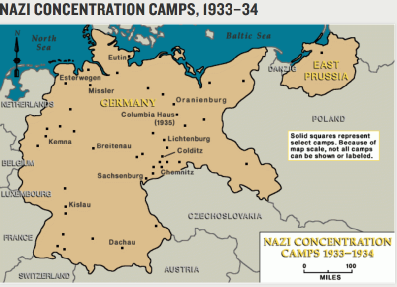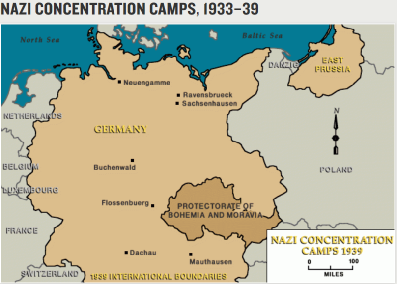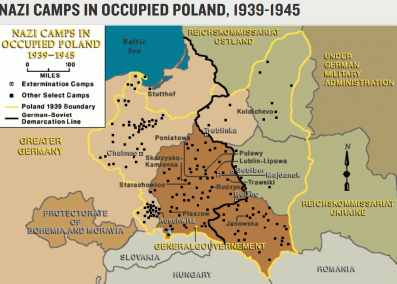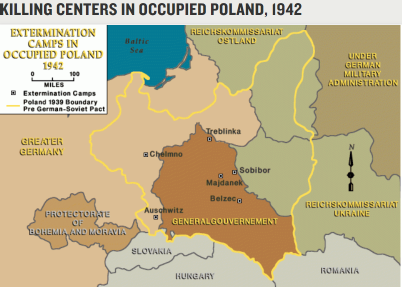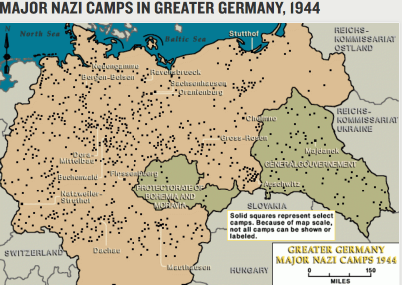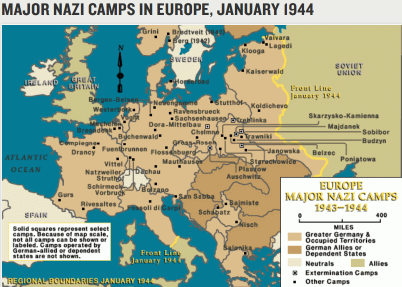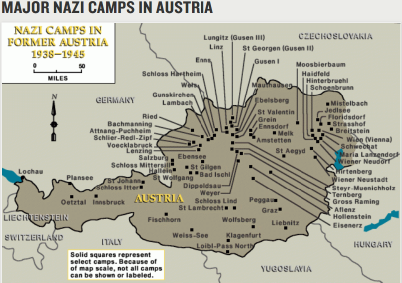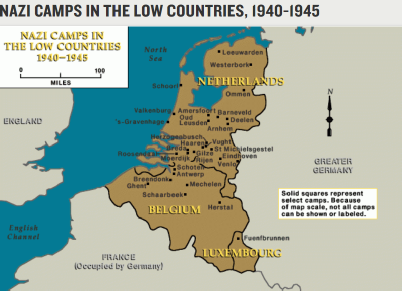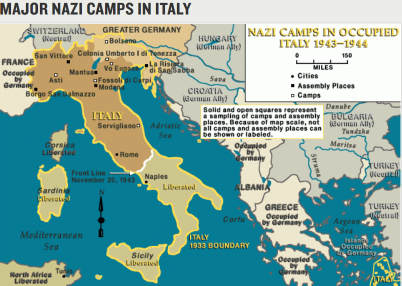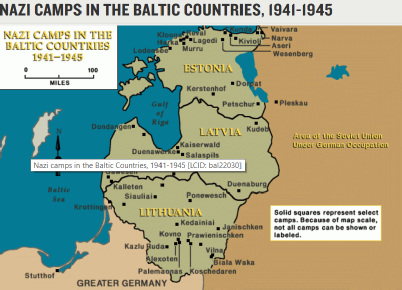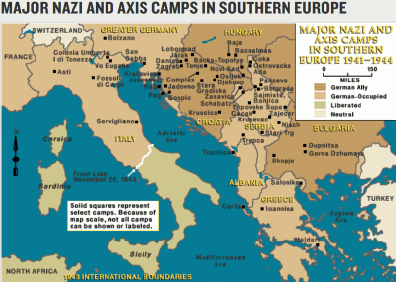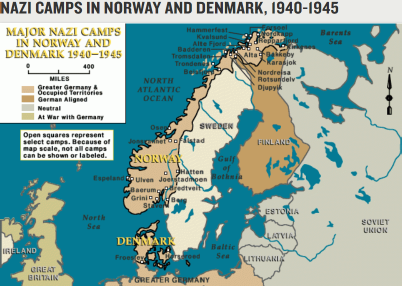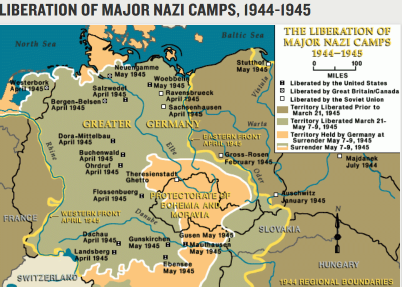|
PART 1 T O P I C |
|
|
|
|
|
|
|
|
|
|
|
|
|
|
|
|
|
|
|
CLICK BUTTON TO GO |
|
|
|
|
|
|
|
|
|
|
|
|
|
Videos |
|
|
|
|
|
|
|
|
|
|
|
|
JewishWikipedia.info
GEOGRAPHIES OF THE HOLOCAUST
United States Historical Memorial Museum
In August 2007, a group of nine historians, art historians, geographers, and historical geographers participated in the two-week Summer Research Workshop on Geographies of the Holocaust at the United States Holocaust Memorial Museum’s Center for Advanced Holocaust Studies. The workshop’s objectives were to determine
- The potential benefits of applying geographic methods, such as spatial analysis and visualization, to the study of the Holocaust
- The extent to which debates in human and cultural geography about “placing the past” (i.e., knowledge of the past as temporal as well as cartographic) could be applied to the Holocaust.
- The workshop generated the precursors of the projects displayed on this website and demonstrated both the profound geographical nature of the Holocaust and the need for scholars to include such methodologies in their research.
Auschwitz Case Study The Auschwitz case study explores spatial and physical dimensions of this most extreme site of genocide.
Landscapes of Experience: Representing the Evacuations from the Auschwitz Camp System, January 1945 This study is a spatial and temporal exploration of how the landscape and environment shaped and transformed the conduct, course, and survivors’ experiences of the evacuations.
The Budapest Ghetto This study maps the shifting shape of ghettoization in Budapest in order to explore the tensions between concentration and dispersion, visibility and invisibility, and accessibility and inacessibility.
A Geography of Complicity: Spaces and Mentalities in Wehrmacht participation in Einsatzgruppen Killings in the Soviet Union This project investigates how to apply a geographical approach to investigating how and why individuals became involved in genocide at the local level, using German soldiers as a case study.
The Holocaust in Italy This case study examines the Holocaust in Italy from a geographical perspective, trying to uncover the local, regional, and national patterns of arrest of Jewish victims.
Mapping the SS Concentration Camp System over Space and Time This case study aims to visualize and then study the spatial and temporal dynamics of the SS camps as a system on the continental scale and within particular regions.
HOLOCAUST HISTORY ANIMATED MAPS
Understand the enormous scope and impact of the Holocaust through animated maps.
United States Historical Memorial Museum
Einsatzgruppen
Dachau
Liberation,
World War II and the Holocaust,
The Holocaust
Voyage of the St. Louis,
Warsaw Ghetto,
Auschwitz,
Rescue,
Resistance,
Lodz
Aftermath of the Holocaust,
European Rail System
LOCATION OF HOLOCAUST CAMPS MAPS
Holocaust Encyclopedia
|
CAMP SYSTEM: MAPS Between 1933 and 1945, Nazi Germany and its allies established more than 42,000 camps and other incarceration sites (including ghettos). The perpetrators used these sites for a range of purposes, including forced labor, detention of people thought |
|
|
|
The first concentration camps in Germany were established soon after Adolf Hitler's appointment as chancellor in January 1933. The Storm Troopers (SA) and the police established concentration camps beginning in February 1933. These camps were set up to handle the masses of people arrested as alleged political opponents. They were established on the local level throughout Germany. Gradually, most of these early camps were disbanded and replaced by centrally organized concentration camps under the exclusive jurisdiction of the SS (Schutzstaffel; the elite guard of the Nazi state). Dachau was the only concentration camp opened in 1933 that remained in operation until 1945, and was the model for the Nazi concentration camp system that replaced |
|
|
The first concentration camps in Germany were established soon after Hitler's appointment as chancellor in January 1933. The Storm Troopers (SA) and the police established concentration camps to handle the masses of people arrested as alleged political opponents of the regime. These camps were established on the local level throughout Germany. Gradually, most of these early camps were disbanded and replaced by centrally organized concentration camps under the exclusive jurisdiction of the SS (Schutzstaffel; the elite guard of the Nazi state). By 1939, seven large concentration camps had been established. Besides Dachau, they were Sachsenhausen (1936) north of Berlin, Buchenwald (1937) near Weimar, Neuengamme (1938) near Hamburg, Flossenbürg (1938), Mauthausen (1938), and Ravensbrück (1939). |
|
|
0 |
|
|
Killing centers (also referred to as "extermination camps" or "death camps") were designed to carry out genocide. Between 1941 and 1945, the Nazis established six killing centers in former Polish territory—Chelmno, Belzec, Sobibor, Treblinka, Auschwitz-Birkenau (part of the Auschwitz complex), and Majdanek. Chelmno and Auschwitz were established in areas annexed to Germany in 1939. The other camps (Belzec, Sobibor, Treblinka, and Majdanek) were established in the Generalgouvernement (General Government) of Poland. Both Auschwitz and Majdanek functioned as concentration and forced-labor camps as well as killing centers. The overwhelming majority of the victims of the killing centers were Jews. An estimated 3.5 million Jews were killed in these six killing centers as part of the Final Solution. Other victims |
|
|
The Nazi camp system expanded rapidly after the beginning of World War II in September 1939, as forced labor became important in war production. Labor shortages in the German war economy became critical after German defeat in the battle of Stalingrad in 1942-1943. This led to the increased use of concentration camp prisoners as forced laborers in German armaments industries. Especially in 1943 and 1944, hundreds of subcamps were established in or near industrial plants. Subcamps were generally smaller camps administered by the main camps, which supplied them with the required number of prisoners. Camps such as Auschwitz in Poland, Buchenwald in central Germany, Gross-Rosen in eastern Germany, Natzweiler-Struthof in eastern France, Ravensbrueck near Berlin, and Stutthof near Danzig on the Baltic coast became administrative centers of huge networks |
|
|
|
|
|
0 |
|
|
|
|
|
|
|
|
|
|
|
|
|
|
|
|
|
As Allied troops moved across Europe in a series of offensives on Germany, they began to encounter and liberate concentration camp prisoners, many of whom had survived death marches into the interior of Germany. Soviet forces were the first to approach a major Nazi camp, reaching the Majdanek camp near Lublin, Poland, in July 1944. Surprised by the rapid Soviet advance, the Germans attempted to demolish the camp in an effort to hide the evidence of mass murder. The Soviets also liberated major Nazi camps at Auschwitz, Stutthof, Sachsenhausen, and Ravensbrück. US forces liberated the Buchenwald, Dora-Mittelbau, Flossenbürg, Dachau, and Mauthausen camps. British forces liberated camps in northern Germany, including Neuengamme and Bergen-Belsen. |
JEWISH HOLOCAUST - MAPS AND GEOGRAPHIES
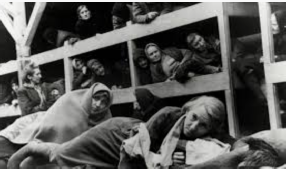
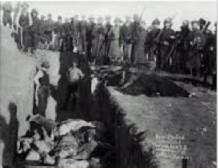
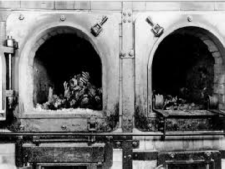
THE
INCREDIBLE
STORY OF THE JEWISH PEOPLE

